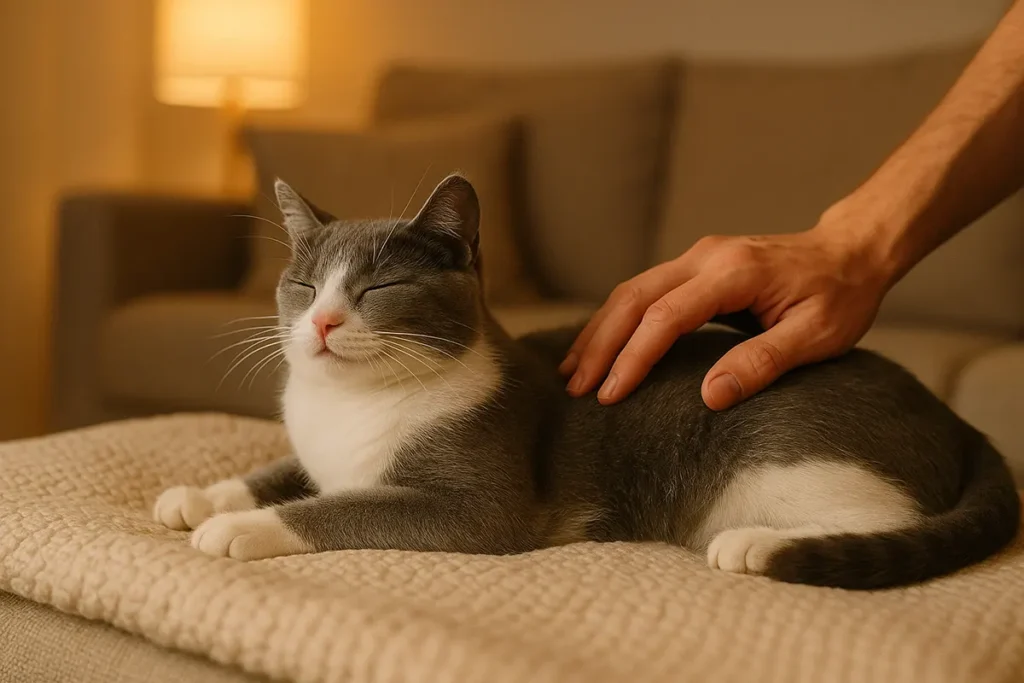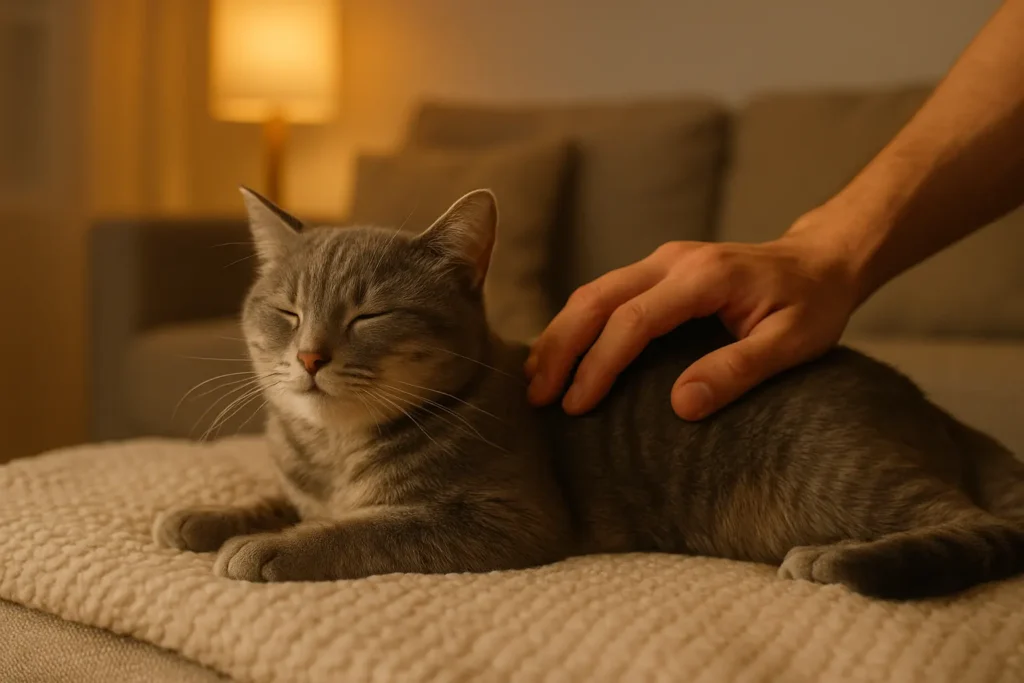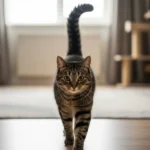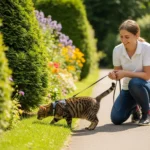Why Your Cat Purrs When You Pet Them
Many cat owners greet their feline friends with a gentle stroke and instantly hear that familiar rumble of contentment: a purr. At this moment, you might wonder, why does my cat purr when I pet them? This question is echoed in dozens of similar searches—why does my cat purr when I pet her, why does my cat start purring when I pet her, why does my cat purr when I pet it, and even why does my cat purr before I pet her. These variations highlight a widespread curiosity about feline vocalizations.
However, not every cat responds with a purr. Some cats meow when petted, leading owners to ask, why does my cat meow when I pet her, why does my cat meow when I first pet her, or why does my cat meow every time I pet him? Other variations include why does my cat meow when I pet her back, why does my cat meow after I pet him, and why does my cat meow before I pet him. Understanding this vocal contrast is key to deciphering your cat’s emotional state.

Beyond straightforward purrs and meows, many owners notice puzzling behaviors: why does my cat meow when I don’t pet him, or why does my cat purr when I don’t pet her? Questions like why does my cat meow when I stroke it or why does my cat meow until I pet him suggest that some cats use vocalization to prompt interaction. Even specialized queries—why does my cat meow when I pet her reddit—show how widespread these questions have become. Let’s explore the science and emotion behind these sounds.
The Science Behind Purring
At its core, purring is a physiological response triggered by rhythmic contractions of the laryngeal muscles. When your finger brushes against your cat’s fur, you might ask, why does my cat purr when I touch it? The sound results from rapid muscle movements causing vocal folds to separate and come back together, producing that soothing vibration. These contractions occur both during inhalation and exhalation, allowing cats to sustain purrs effortlessly while receiving your affectionate petting.
Studies suggest that the typical purring frequency, around 25 to 150 Hz, can promote bone density, reduce pain, and accelerate healing in both cats and humans. This might explain why some cats purr louder when content—why does my cat purr loudly when I pet her—especially when they feel safe and supported by your touch. You may notice that your cat purrs whenever you pet him, a natural self-soothing mechanism tuned by evolution to foster well-being in social contexts.
Intriguingly, cats also purr in other contexts—not only during petting but also when they self-heal, rest, or even greet their owners. Some owners ask, why does my cat purr before I pet her? In fact, a cat may start purring at the first hint of your approach, expressing anticipation and excitement. Unlike other vocalizations, purring is often a sign of trust: your cat feels secure enough with you to reveal this vulnerable, low-intensity communication.

Emotional and Social Reasons
Beyond mere biology, purring carries deep emotional significance. When you stroke your cat’s back and feel that gentle rumble, it’s a sign of social bonding—why does my cat purr whenever I pet her? This communal behavior originates in kittenhood, when newborns purr to signal their mother that they are nearby and content. As adult cats, purring during petting reinforces the bond with you, showing appreciation and recognition of your care.
Sometimes purring serves as self-calming or appeasement in slightly stressful situations. You might think, why is my cat purring while I pet him when I’m grooming him or offering treats? In these moments, purring can signal a mix of comfort and mild anxiety—an invitation to proceed gently. Recognizing when purring accompanies other body language, like slow blinking or lifted paws, helps you adjust your approach to keep your cat at ease.
Each successful petting session reinforces your cat’s trust, setting up a positive feedback loop where they learn that your touch equals comfort and safety. Over time, your cat may begin purring at the slightest contact—why does my cat purr when I pet her but not when strangers do it? This selective response highlights the unique bond you share, as your scent, voice, and touch all signal familiarity and affection.
Why Cats Meow When Petted
While purring is often associated with pleasure, meowing during petting tends to serve a different purpose: grabbing your attention. Owners frequently search, why does my cat meow every time I pet him or why does my cat meow softly when I pet him? Meowing can indicate a desire for interactive play or more vigorous contact. If your cat’s meow rises in pitch or frequency, it might mean they want you to switch from a gentle stroke to a fun game.
Sometimes meows during petting are linked to routine and timing. You may hear a persistent meow while petting before mealtime—why does my cat meow after I pet him or why does my cat meow until I pet him? In these cases, your cat associates affectionate contact with upcoming food or treats. Recognizing these patterns allows you to meet their needs proactively, offering a snack first or delaying petting until after feeding to avoid mixed signals.
Finally, meowing can signal discomfort or overstimulation in particular areas. You might find yourself asking, why does my cat meow when I pet her tail or why does my cat meow when I pet her head? Tails and heads can be more sensitive, and some cats prefer being petted on the cheeks, chin, or chest instead. Paying attention to where your cat enjoys touch and avoiding high-sensitivity zones can reduce meows and increase purrs.

Timing Matters: Purring Before and After Petting
Cat behavior isn’t limited to the moment of contact—many owners wonder why does my cat purr before I pet him or why does my cat purr before I pet her? This anticipatory purring shows excitement and a positive expectation. When your cat hears your familiar footsteps or sees you reach toward their favorite spot, they may start purring as a way to greet you, signaling that they welcome your attention even before your hand makes contact.
During petting sessions, consistent purring—why does my cat purr every time I pet her or why does my cat purr whenever I pet it—reinforces the idea that your touch is enjoyable. This steady vibration signals pleasure, comfort, and trust. Cats may even lean into your hand or raise their bodies to maximize contact, turning the interaction into a full-body conversation of shared warmth and affection.
In some cases, purring doesn’t stop right away when you withdraw your hand—why does my cat purr when I’m not petting her or why does my cat purr when I don’t pet her? This lingering response reflects residual comfort and calm. Your cat may drift off to a relaxed nap while carrying that last bit of reassurance, much like a child falling asleep after a bedtime story. Recognizing this helps you appreciate the lasting effect of affectionate touch.
When Purring Stops: What It Means
While purring is usually a positive sign, a sudden halt mid-stroke can signal that your cat no longer feels comfortable. You might ask, why does my cat stop purring when I pet her or why does my cat stop purring when I pet him? This abrupt silence can indicate pain, discomfort, or simple overstimulation. Checking for flinches, twitching tails, or flattened ears during petting can help you identify if you’ve touched a sore spot.
Sometimes instead of purring, your cat may start meowing during an uncomfortable stroking session—why does my cat meow loudly when I pet him or why does my cat meow softly when I pet him? Changes in vocal tone, volume, or pitch often accompany shifting comfort levels. A loud, harsh meow usually conveys irritation or pain, while a soft, plaintive meow might call for gentler handling or a change of location to a calmer environment.
Non-verbal signals—like tail flicking, shifting weight, or grooming your hand—often precede a stop in purring or onset of meows. Owners who notice the question, why does my cat meow while I pet him, can benefit from pausing the session momentarily. Offering your cat space and time to reset shows respect for their comfort zone and strengthens trust, ensuring your next interaction ends on a positive note.

Tips to Encourage a Happy Response
To maximize purring and minimize puzzled meows, discover your cat’s preferred petting zones. Many cats love gentle strokes around the cheeks, chin, and base of the ears—avoid sensitive areas like the tail or belly unless you know your cat enjoys them. If you’ve ever thought, why does my cat meow when I pet her head or why does my cat meow every time I pet its head, experimenting with different spots can reveal your cat’s personal sweet spot.
For the best results, choose a calm time and quiet place for petting—away from loud noises and other pets. It’s common to see posts asking why does my cat meow when I pet her reddit, where experienced owners advise minimizing distractions. A dedicated petting spot, like a cozy couch corner or your lap by the window, can help your cat feel secure and more inclined to purr than meow.
Incorporating positive reinforcement, such as treats or gentle praise, can further encourage purring. Offer a small reward immediately after a successful petting session to reinforce the behavior—your cat will learn that purring and calm behavior lead to tasty benefits. If you’ve asked, why does my cat purr when I give him treats, you’ll find that the combination of touch and reward creates a powerful association, strengthening your bond with your furry friend.




